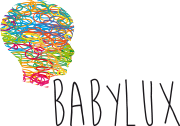The system is based on near-infrared diffuse correlation spectroscopy (DCS) and time-resolved reflectance spectroscopy (TRS). Both technologies work in a wavelength range called the “physiological window” (600nm-900nm) which allows to reach deeper tissue layers, sampling at the depth of the cerebral cortex. DCS provides tissue hemodynamic information, the local micro-vascular cerebral blood flow (CBF), and TRS measures locally the optical tissue properties allowing to deduce information on oxygen saturation and total hemoglobin concentration. By this innovative combination of an accurate state-of-the-art TRS and DCS for the first time in a single instrument, a set of information for monitoring the local cerebral oxygen metabolism becomes accessible.
The achievements of the project are:
- an innovative medical device for clinical research combining two advanced biophotonic technologies (TRS and DCS), extending already tested prototypes to the level of demonstrator
- a clinical protocol authorized by the Danish Medical Agency and by the Italian Ministry of Health
- two devices installed in the neonatology units in Copenhagen and Milan and used by clinical doctors for at least 6 months, with minimal support from developers and limited to data analysis
- continuous measurements of tissue oxygenation and blood flow index from the heads of term and preterm infants with: acceptable short time variability; qualitatively reasonable dynamic responses
- moving the optode from one site on the head to another resulted in: less than 5% variability in tissue oxygenation (better than existing commercial devices currently used in the neonatology units); 15-25% variability in blood flow index (comparable to trancranial Doppler ultrasound measures of macrovasculature, Xenon clearance and other modalities)
- a device safe in terms of acute adverse reactions (no skin mark after measurements)
To know more, download the final brochure.
